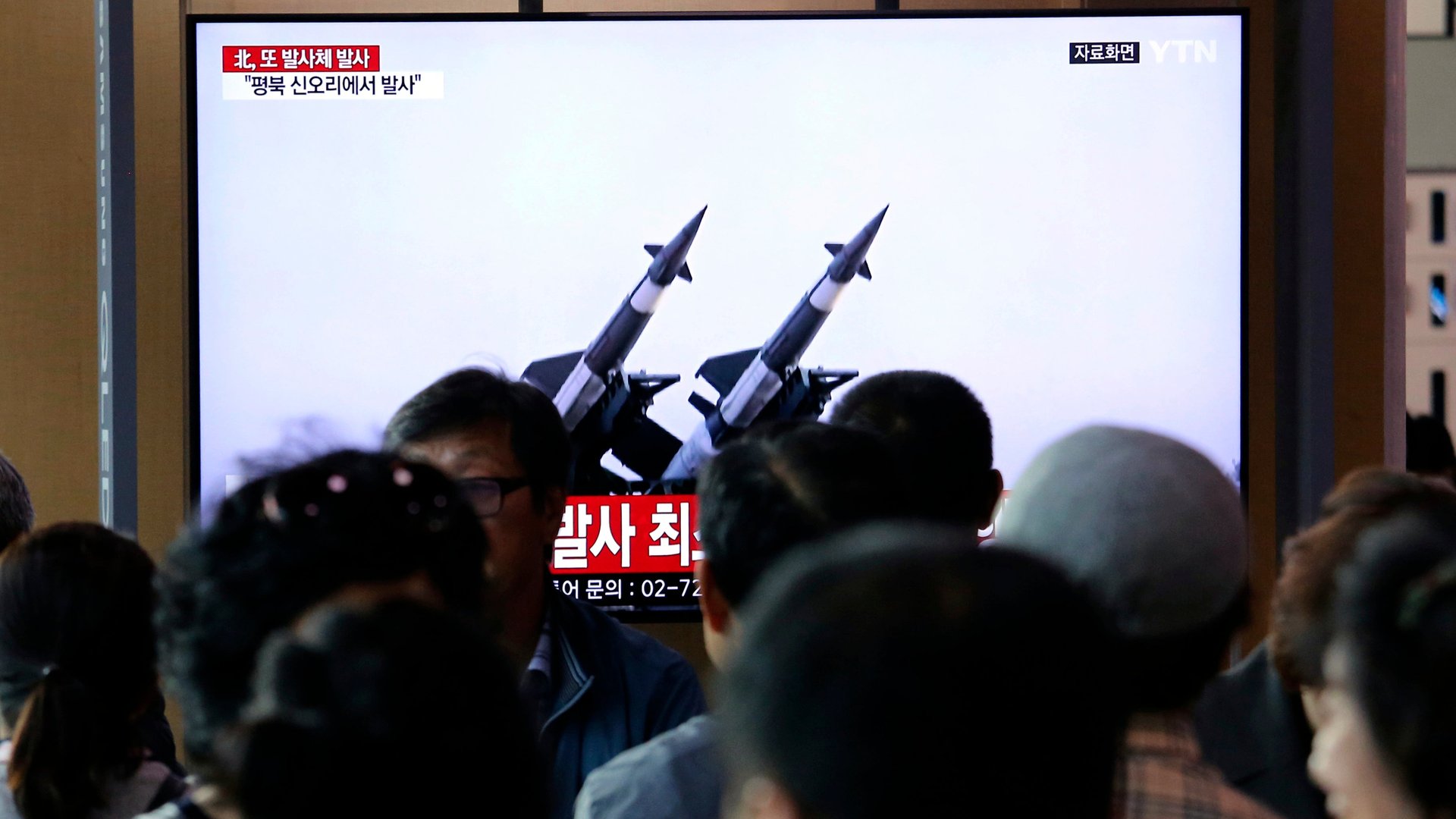The world is heading for a new missile arms race
The world is witnessing a huge growth in the number of ballistic missiles used to threaten enemies thousands of kilometers away with conventional and nuclear weapons, as tensions ratchet higher between world powers and international arms agreements fall by the wayside.


The world is witnessing a huge growth in the number of ballistic missiles used to threaten enemies thousands of kilometers away with conventional and nuclear weapons, as tensions ratchet higher between world powers and international arms agreements fall by the wayside.
China is building an enormous arsenal of missiles to deter potential US attacks, and, along with Russia, it’s developed hypersonic missiles that offer an unprecedented challenge to air defense systems. In the Middle East, a hidden arms race is ongoing between Saudi Arabia and Iran to develop rocket weapons. And the United States under president Donald Trump is giving up on arms control agreements and preparing to invest in more missiles and missile defenses.
One pressing issue is the renewal of the New START treaty, signed by the US and Russia in 2010. It reduced and limited the number of nuclear weapons launchers owned by both countries, and is up for renewal in 2021. So far, Trump and his hawkish national security advisor John Bolton have shown no interest in extending the deal.
“If no one feels like extending the agreement—New START—well, we won’t do it then,” Russian president Vladimir Putin said this week. “There won’t be any instruments limiting an arms race, for example, deploying space-based weapons…[t]his means that nuclear weapons will be hanging over every one of us all the time.”
Trump’s attitude on arms deals is reflected in his State of the Union speech in February, when he said “perhaps we can negotiate a different agreement, adding China and others, or perhaps we can’t—in which case, we will outspend and out-innovate all others by far.”
Last month, a Dutch nonprofit estimated that the US had spent $1 billion on new rocket weapons since the US withdrew from the Intermediate Nuclear Forces (INF) Treaty in October 2018. “The research confirms that there is a new nuclear arms race happening,” Susi Snyder, the report’s author, told Quartz.
And at the same time, the US and other nations are rushing to build defenses against missiles. Turkey is at the center of a tug-of-war between the US and Russia, with the winning country making a deal to sell Ankara its proprietary missile defense system. With Trump’s summitry failing to keep North Korea from developing nuclear-armed missiles, the Pentagon is investing more in US missile defense systems—though they aren’t particularly trustworthy—and in advanced space sensors to give them a head start at identifying potential threats.
Nuclear weapons are the most terrifying missile-delivered weapons, but the burgeoning arms race is also taking place with conventional munitions in ways that may have a more direct strategic effect.
China has built up an array of conventional weapons to defend its shores, including rockets that might nullify the advantage of US Navy aircraft carriers, one of America’s most potent methods of projecting force abroad. “We know that China has the most advanced ballistic missile force in the world,” James Fanell, a retired U.S. Navy intelligence officer, told Reuters. “They have the capacity to overwhelm the defensive systems we are pursuing.”
China was able to achieve this in part because it was never party to the INF Treaty, which limited medium-range land-based ballistic missiles. The Trump administration has used this as a reason to pull out of the deal, though arms control experts say the move undermines efforts to convince Russia and China to limit their medium-range arsenal.
China has also been helping Saudi Arabia develop its own missile force, much to the dismay of the American government. The Saudis are responding to Iran’s buildup of short-range missiles, which was the reason given by the US for pulling out of a global deal to restrict Iran’s nuclear program, though those missiles were not clearly forbidden. Still, the use of missiles by both sides in their proxy war in Yemen has led to civilian casualties, and is also leading other Middle Eastern states to expand their access to ballistic rocket weapons.
Perhaps most concerning to US war planners are hypersonic missiles, which fly much faster than traditional cruise missiles—as fast as five times the speed of sound—but at far lower altitudes than traditional ballistic missiles, making them difficult to intercept.
US defense official Michael Griffin said in a speech last year that despite Chinese and Russian hypersonic weapons, “we are, have been [and] will remain the world leader in this research area.” The difference comes in whether actual weapons are constructed: “We didn’t see a need for it. But our adversaries get a vote, and they voted. So we’re going to see their hand and raise them one, in both offensive and defensive capabilities.”